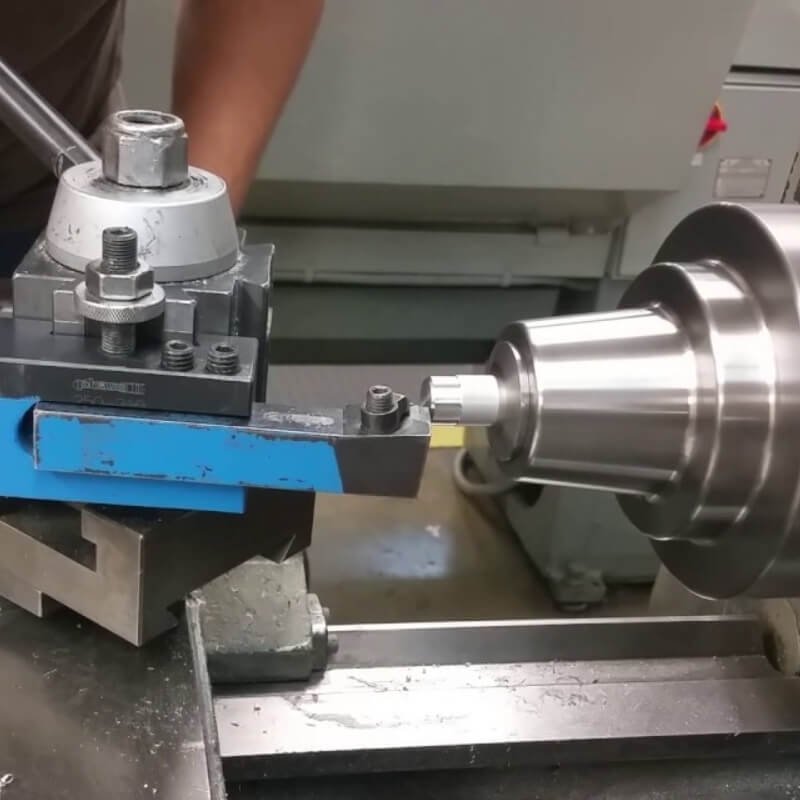
Aluminum machining presents unique challenges due to the material's properties, such as its softness, ductility, and tendency to adhere to cutting tools. Carbide inserts, designed specifically for aluminum, address many of these issues, making them an indispensable tool in modern manufacturing. Below, we delve into the common problems in aluminum machining and how carbide inserts provide effective solutions.
The Problem: Aluminum tends to form long, continuous chips during machining, which can tangle around the tool or workpiece. Poor chip evacuation increases the risk of surface defects, tool breakage, and production delays.
The Solution: Carbide inserts for aluminum with optimized chip breaker designs create shorter, more manageable chips. These specialized geometries direct chips away from the cutting zone, reducing tangling and ensuring smooth operation. Inserts with polished surfaces further enhance chip flow, preventing accumulation.
The Problem: Although aluminum is relatively soft, its high thermal conductivity can cause rapid tool wear due to built-up edge (BUE) formation, especially at high cutting speeds.
The Solution: Carbide inserts made from high-quality grades and coated with materials like titanium nitride (TiN) resist wear and reduce friction. These features extend tool life by minimizing heat generation and preventing BUE formation. Uncoated inserts with polished surfaces are also effective for maintaining sharpness during aluminum machining.
The Problem: Achieving a high-quality surface finish on aluminum can be challenging due to tool chatter, built-up edges, and uneven material removal.
The Solution: Carbide inserts with sharp cutting edges and precision-ground surfaces ensure smoother cuts. Their rigidity reduces vibrations, while specific edge geometries minimize BUE formation, leading to a superior surface finish. Additionally, high rake angles improve material shearing and result in finer finishes.
The Problem: Aluminum's high thermal conductivity can transfer heat to the cutting tool, causing deformation, tool failure, and dimensional inaccuracies.
The Solution: Carbide inserts for aluminum are highly heat-resistant, maintaining their integrity under extreme temperatures. Some inserts feature coatings that dissipate heat more effectively, ensuring consistent performance and dimensional accuracy.
The Problem: Aluminum's adhesive nature causes it to stick to cutting tools, leading to built-up edge, increased cutting forces, and potential tool damage.
The Solution: Carbide inserts with polished surfaces and anti-adhesion coatings reduce material adhesion. These features maintain sharp cutting edges and improve productivity by minimizing interruptions caused by tool cleaning or replacement.
The Problem: High-speed machining (HSM) of aluminum requires tools that can withstand extreme cutting conditions without compromising precision or durability.
The Solution: Carbide inserts excel in HSM applications due to their high hardness, toughness, and thermal stability. Their advanced geometries allow for efficient material removal, reduced cycle times, and consistent performance, even at elevated speeds.
The Problem: Frequent tool changes, poor tool performance, and production delays increase operational costs in aluminum machining.
The Solution: The durability and efficiency of carbide inserts reduce tool changeovers and downtime. Their long lifespan and high performance improve overall productivity, lowering the cost per part and enhancing profitability.
Carbide inserts for aluminum are a game-changer in aluminum machining, addressing challenges such as chip control, tool wear, heat management, and surface finish quality. By leveraging advanced designs and materials, these inserts ensure efficient, precise, and cost-effective machining processes. For manufacturers aiming to achieve optimal performance in aluminum applications, investing in high-quality carbide inserts for aluminum is a clear path to success.
Contact person: Steve Lee
E-mail: [email protected]
Phone: 86-731-22200908
Address: Floor 4,Building NO.15,Zhichuang Plaza,NO.1299,Liyu Road,Tianyuan District,Zhuzhou City, Hunan, P.R. CHINA
Tel:0086-19973342799
E-mail: [email protected]

WeChat Official Account